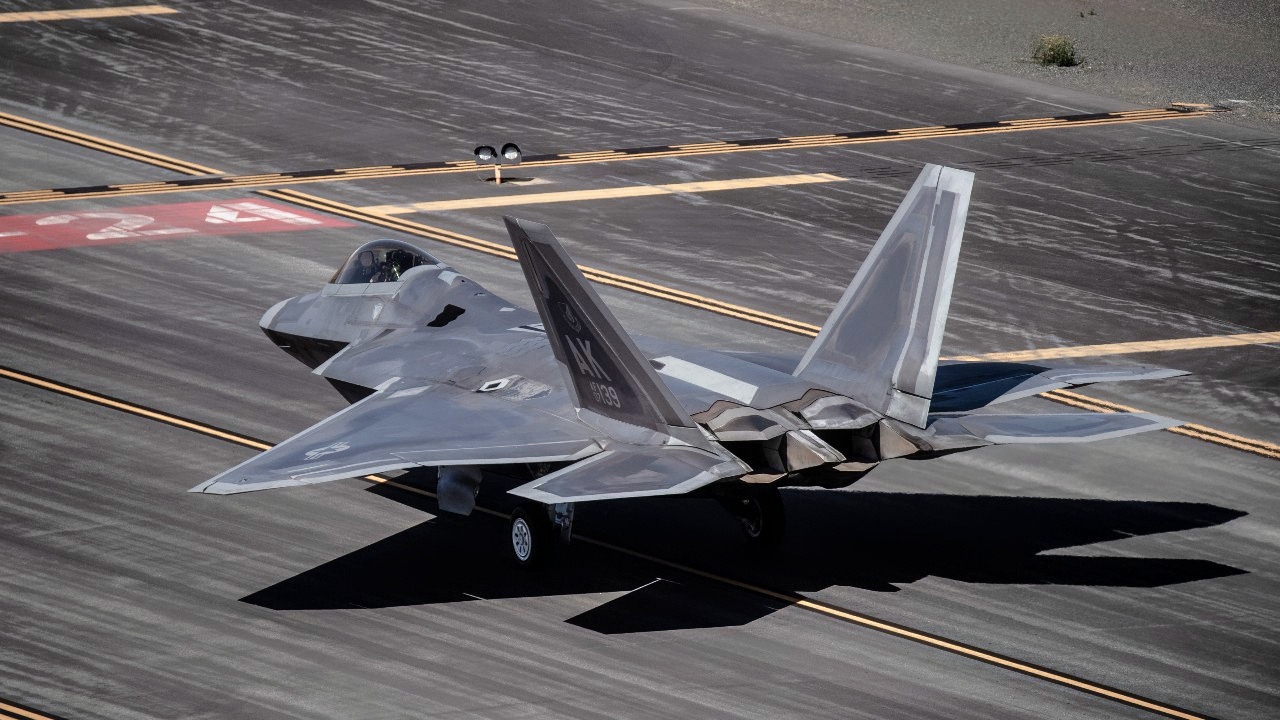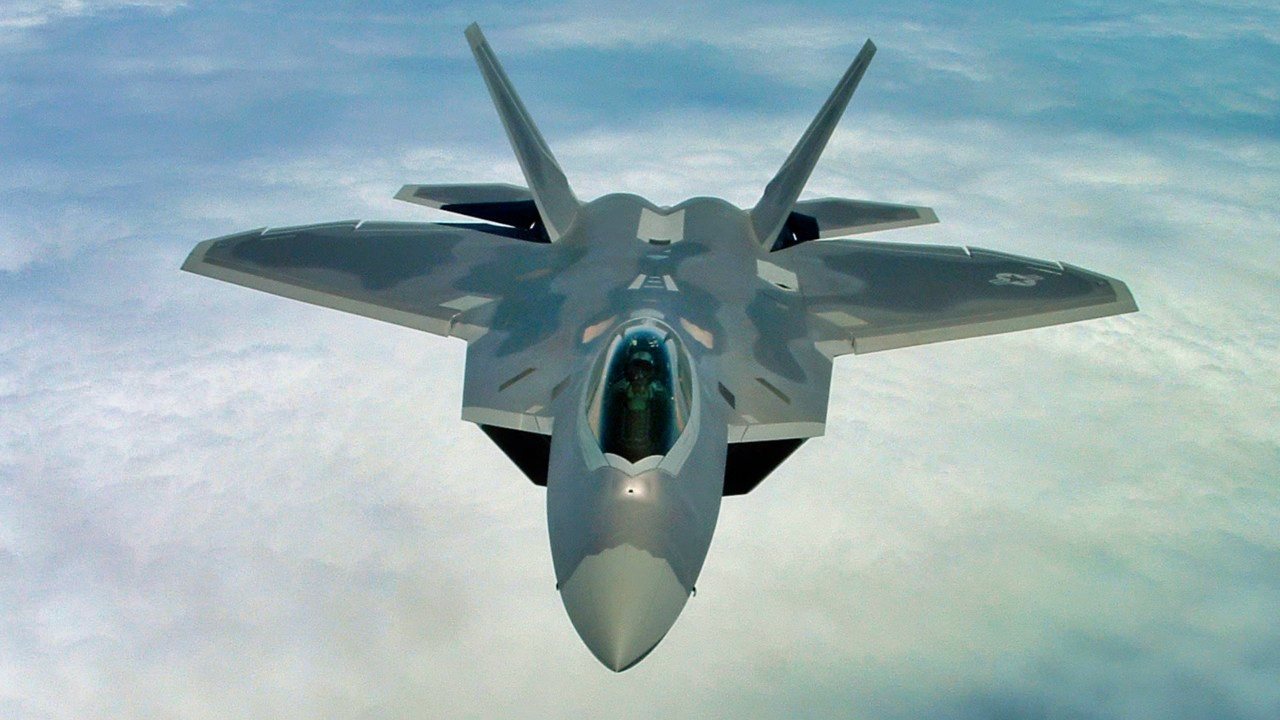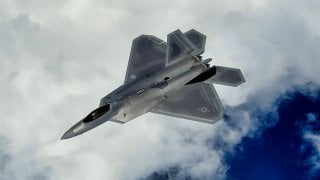The U.S. Air Force Is Sending F-22 Raptors Right to China's Doorstep
The U.S. Air Force is replacing its aging F-15C Eagles at Kadena Air Base in Okinawa, Japan, with newer F-22 Raptor stealth fighters and F-16 Fighting Falcons. This move aims to enhance U.S. military capabilities amid escalating tensions with Russia and China, particularly concerning Taiwan.
What You Need to Know: The U.S. Air Force is replacing its aging F-15C Eagles at Kadena Air Base in Okinawa, Japan, with newer F-22 Raptor stealth fighters and F-16 Fighting Falcons. This move aims to enhance U.S. military capabilities amid escalating tensions with Russia and China, particularly concerning Taiwan.

-The F-22 Raptors from Alaska and Virginia, along with F-16s from South Carolina, are being deployed to bolster air superiority and readiness in the Indo-Pacific region.
-Kadena Air Base's strategic location, just a few hundred miles from Taiwan and China, makes it a critical asset for potential conflicts, ensuring the U.S. maintains a robust defensive posture in the area.
U.S. Air Force Deploys F-22 Raptors to Japan Amid Rising Tensions with China
As tensions with Russia escalate and relations with China continue to be shaky over Taiwan, the U.S. Air Force sends newer and more capable fighter jets to Japan.
F-22 Raptor stealth fighter jets and F-16 Fighting Falcon fighter jets are replacing old F-15C Eagles in Kadena Air Base, Japan.
F-22s and F-16s Against China
The F-15C has been a great aircraft and a staple at Kadena Air Base for almost fifty years. But technology and the level of adversary capabilities have moved on. And so is the Air Force.
F-22 Raptors from the 525th Expeditionary Fighter Squadron out of Joint Base Elmendorf-Richardson, Alaska, have joined F-22s from the 27th Expeditionary Fighter Squadron out of Joint Base Langly-Eustis, Virginia, at Kadena Air Base. Bolstering up their numbers are F-16s from the 77th Expeditionary Fighter Squadron out of Shaw Air Force Base, South Carolina.

Located on the small island of Okinawa, Kadena Air Base is a strategic location for U.S. military operations in the Indo-Pacific theater of operations. Approximately 380 miles from Taiwan and 415 miles from China, Kadena Air Base would be at the center of operations in a potential near-peer conflict with Beijing.
The F-22 Raptor is the first operational stealth fighter jet in the world. Although the Air Force only has a limited number of F-22s active, the production line has been closed for more than twelve years, the stealth fighter jet remains the most capable air superiority aircraft in the world. Its combination of stealth, sensors, maneuverability, and weapons means that the F-22 can shoot down any target out there. And sometimes, it can do so without even the adversary realizing the F-22 is there in the first place.
The F-16 is also a very capable fighter jet. As a fourth-generation aircraft, the F-16 is at a disadvantage against Chinese fifth-generation jets but can more than counter less advanced aircraft. Moreover, in the event of a conflict, the Air Force plans on combining its fighter jets to achieve maximum effectiveness. For example, F-35 Lightning II stealth fighter jets can use their advanced sensors and interlinked capabilities to guide older aircraft like the F-16 to targets.
“The transition to more modern aircraft at Kadena exemplifies the U.S. Air Force’s continued commitment to enhancing posture and building on the strong foundation of the U.S.-Japan alliance,” the Air Force stated.
Some F-15Cs are remaining in Kadena, but the Air Force plans on transitioning completely to more advanced aircraft soon.
However, the F-15 won’t leave forever. The Air Force plans on bringing around fourty F-15EX Eagle IIs to Kadena.
“There will be some learning as it comes to putting a new platform into these environments and we’ll probably learn a few lessons about the capabilities of the F-15EX,” Pacific Air Forces commander Gen. Kevin B. Schnider told Air & Space Forces Magazine in September.
“I don’t think it’s going to be a significant transition at all to bring a new platform into Kadena just because the people that are operating that platform already know the business.”
About the Author
Stavros Atlamazoglou is a seasoned defense journalist specializing in special operations and a Hellenic Army veteran (national service with the 575th Marine Battalion and Army HQ). He holds a BA from Johns Hopkins University and an MA from the Johns Hopkins School of Advanced International Studies (SAIS). His work has been featured in Business Insider, Sandboxx, and SOFREP.
Image Credit: Creative Commons and/or Shutterstock.


